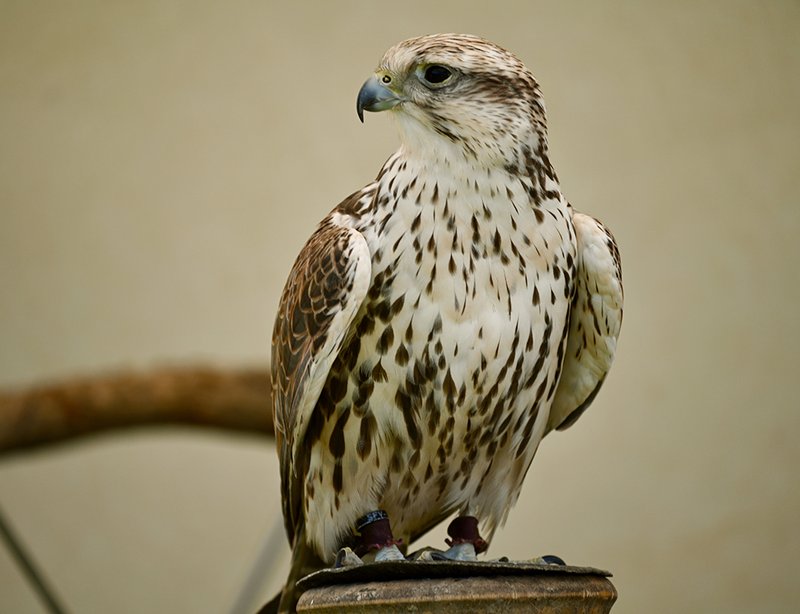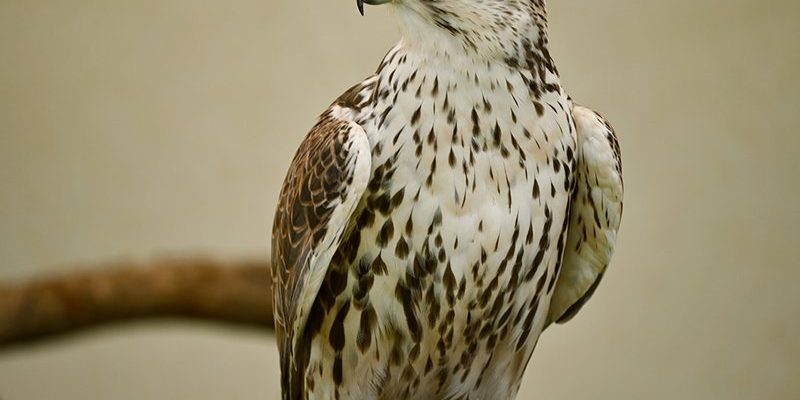
The Saker Falcon (Falco cherrug) is a fascinating creature that lives mostly in the Eurasian steppes and open landscapes. But it’s not the only player in the falcon family. You might be surprised to learn that it shares its territory with various other birds—each with distinct traits. Let’s dive into the differences between the Saker Falcon and some of its closest relatives so you can appreciate these incredible birds even more.
Physical Differences
When it comes to physical characteristics, the Saker Falcon has several traits that set it apart from other falcons. For starters, it’s a large bird, measuring about 18-23 inches in length. Its wingspan can reach up to 47 inches, making it one of the bigger falcons. Picture it gliding effortlessly over fields—it’s a sight to behold!
In contrast, the Peregrine Falcon, one of its closest relatives, is slightly smaller, averaging 15-20 inches in length. While both birds share a similar coloration, the Saker Falcon tends to have darker plumage and a more robust body. You might notice the Saker has a brownish back with light streaks, while the Peregrine has a blue-gray back. These differences are essential when identifying the species in the wild.
The Lanner Falcon, another close relative, is also a contender in this group. It has a more slender build compared to the Saker and boasts a uniform color that ranges from light to dark brown. This variation helps birds adapt to their environments and hunt more effectively. Each species has its unique look, and understanding these nuances can enhance your birdwatching experiences.
Hunting Behavior and Techniques
Hunting is where the Saker Falcon really shines. These birds are known for their impressive speed and agility. They typically hunt small mammals, birds, and even insects. Imagine a skilled athlete darting towards its target—that’s the Saker in action! They often use a technique called “stooping,” diving from heights to catch prey mid-flight.
In comparison, the Peregrine Falcon is celebrated as the fastest bird in the world. When it dives, it can reach speeds up to 240 miles per hour! This makes the Peregrine an exceptional hunter, particularly good at snagging birds in the air. You might find it swooping down from high cliffs or tall buildings, ready to grab a meal.
Meanwhile, the Lanner Falcon takes a slightly different approach. It’s more of a sit-and-wait hunter, often perched on high ground, scanning for prey. This behavior means it uses stealth and patience rather than speed alone. Each falcon species has its strategic advantages, which often depend on their preferred hunting grounds and available food sources.
Habitat and Range
Understanding where these birds live can shed light on their differences and lifestyles. The Saker Falcon thrives in open habitats like grasslands, steppes, and plains. It prefers areas where it can easily spot prey while also having some cover for nesting. Their range extends across Central Asia into Eastern Europe, often favoring regions with low vegetation.
In contrast, the Peregrine Falcon has a much broader range. These birds can be found on every continent except Antarctica, thriving in urban environments as well as rural areas. Their adaptability is remarkable, allowing them to nest on skyscrapers and cliffs alike.
The Lanner Falcon is primarily found in parts of Africa, Europe, and southwestern Asia. Its habitats include open country and savannah, providing ample hunting opportunities. Each species has carved out its niche, but environmental changes can impact their populations significantly.
Breeding and Nesting Habits
When it comes to breeding, the Saker Falcon shows some interesting behaviors. They typically build their nests in cliffs or large trees, using materials like sticks and grass. The female lays a clutch of two to six eggs, and both parents take turns caring for the young. Isn’t that sweet?
The Peregrine Falcon has a similar nesting routine but often prefers to nest on high ledges, which gives their young a secure elevation from ground predators. Their eggs are laid in a shallow scrape, and after about 30-35 days of incubation, chicks hatch and rely on their parents for food.
The Lanner Falcon, on the other hand, doesn’t mind nesting in more varied locations, including cliffs, trees, or even old buildings. The diversity in nesting habits helps each species adapt to the landscapes they inhabit, ensuring their survival.
Vocalizations and Communication
Birds communicate in fascinating ways, and falcons are no exception. The Saker Falcon has a distinct call—short and sharp, often used to communicate with its mate. It’s like a quick conversation in the air, signaling presence or territory.
On the flip side, the Peregrine Falcon’s call is a series of loud, high-pitched screams. You might hear these calls echoing from high perches, acting as both warning signals and mating calls. Their vocalizations are part of their playful and territorial nature.
The Lanner Falcon produces a softer, more melodic call. It’s not as loud as the other two but is effective for communicating with its mate and young. Understanding these sounds can enhance your birdwatching, giving you insights into what these birds are feeling or trying to convey.
Conservation Status and Threats
As with many species, conservation is a significant concern for these falcons. The Saker Falcon faces threats from habitat loss, hunting, and climate change. Conservation efforts focus on protecting their breeding grounds and promoting awareness about their plight.
The Peregrine Falcon, once endangered due to pesticide use, has seen a remarkable recovery thanks to conservation initiatives. They’ve become symbolic of conservation success stories, reminding us of the importance of protecting wildlife.
The Lanner Falcon is also affected by habitat destruction, but lesser-known threats include the loss of prey species and poaching. Each falcon species has its challenges, highlighting the need for continued conservation efforts across the board.
Diving deep into the differences between the Saker Falcon and other bird species like the Peregrine and Lanner Falcon reveals the rich complexity of avian life. From their physical characteristics and hunting techniques to their habitats and conservation challenges, each bird offers a unique glimpse into the natural world.
Whether you’re a birdwatching enthusiast or just curious, understanding the nuances between these species can enrich your appreciation for them. So, next time you spot a falcon soaring overhead, take a moment to think about its fascinating life and the differences that make it special. Each falcon is a marvel of evolution, adapting to its environment in unique ways, and that’s something worth celebrating.

